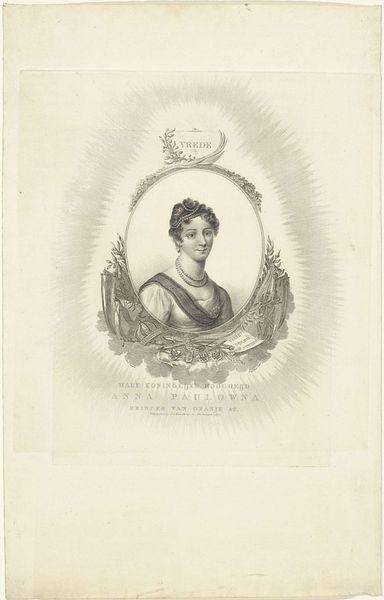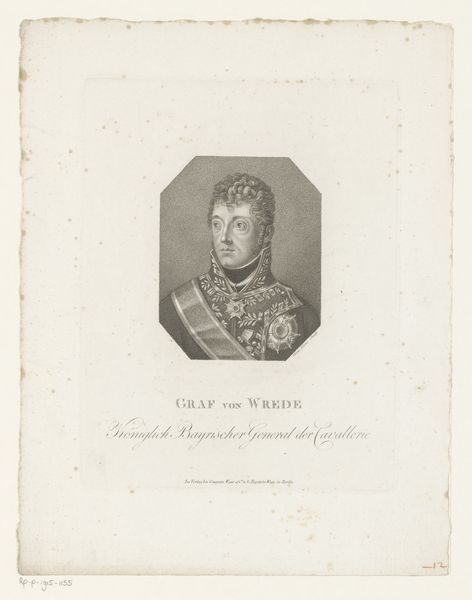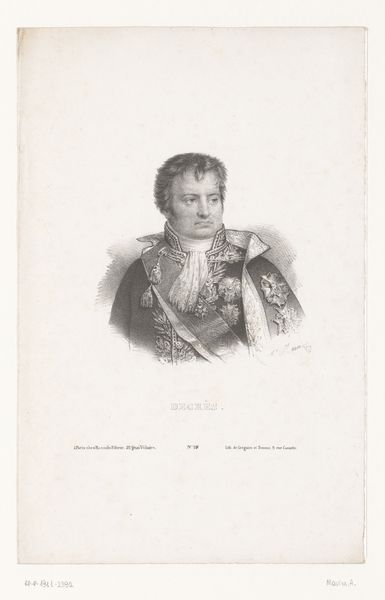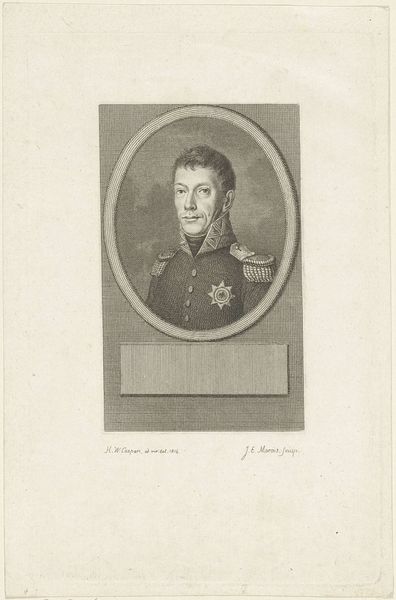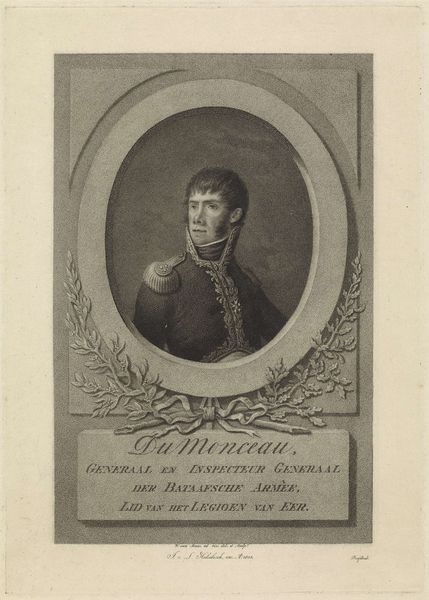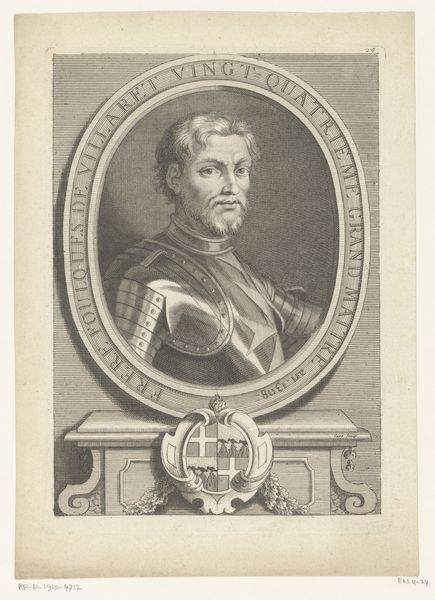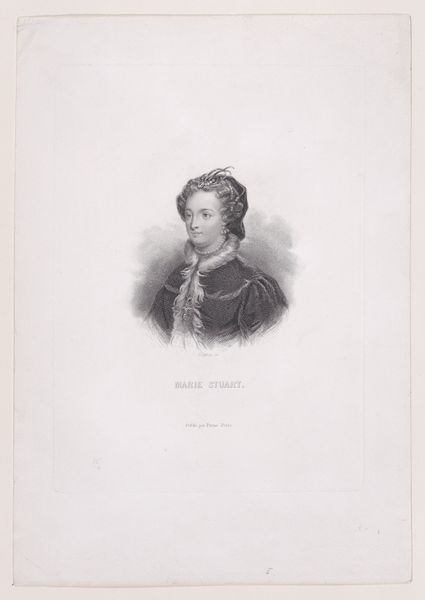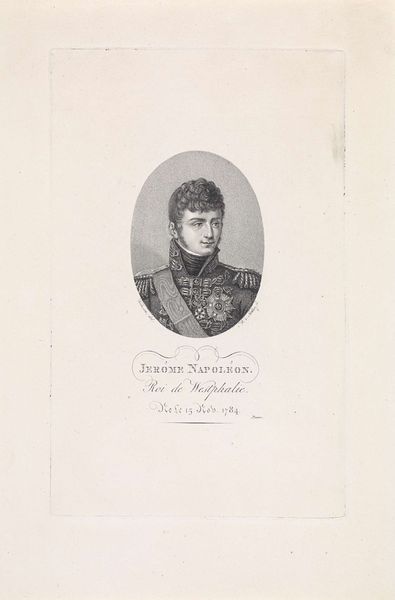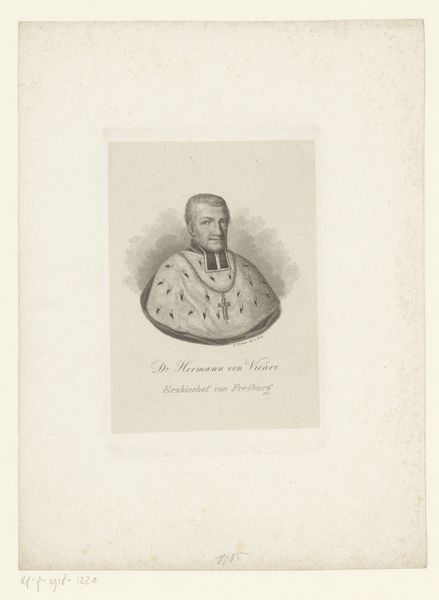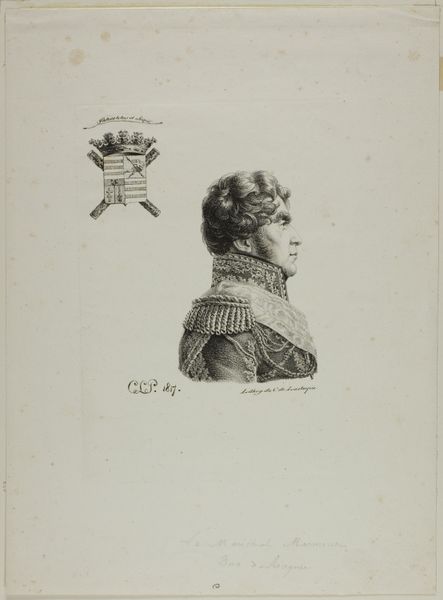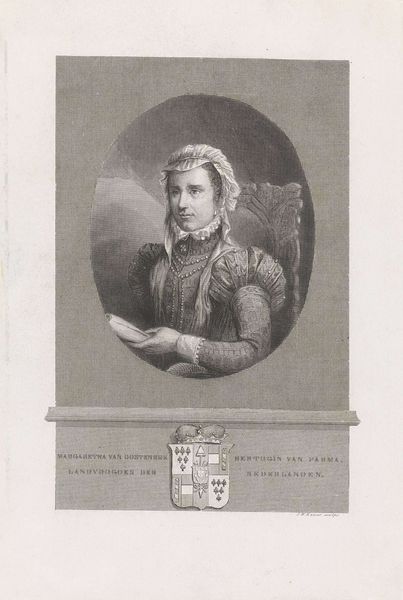
print, engraving
#
portrait
#
neoclacissism
# print
#
old engraving style
#
engraving
#
realism
Dimensions: height 527 mm, width 329 mm
Copyright: Rijks Museum: Open Domain
Curator: Before us, we have "Portret van Frederik, prins der Nederlanden," an engraving from 1815 currently residing here at the Rijksmuseum. Editor: It’s fascinating! At first glance, it strikes me as quite austere, even a little romantic with that halo effect emanating from the portrait, almost suggesting divine right, doesn't it? Curator: That impression isn't far off. Neoclassicism was a movement that used antiquity to comment on contemporary socio-political order. Consider the print itself, an easily reproduced object designed for broad circulation; it visually asserts the prince's authority. Editor: The production method is relevant; being a print it lowers the preciousness, allowing for broader access, influencing and standardizing a visual idea of leadership. Looking closer at the details surrounding the prince in the oval – are those war documents or peace treaties near the sword and what is its relation to "vrede", Dutch for "peace" which can be seen at the top? Curator: Good eye! "Vrede," meaning peace, is emphasized. Note how this image also employs symbols associated with statecraft, intertwined with emblems suggesting peace through military strength. The image projects a need for calm governance while reminding of past accomplishments by military men. Editor: Absolutely! And how does the institution - Rijksmuseum - plays into this today? A national museum displaying prints of the Royal family strengthens that symbolic association of art with cultural and perhaps political identity for the public. It’s all part of constructing a narrative around national pride. Curator: Precisely! By showcasing works like these, museums actively engage in shaping collective memory, reminding of us of the intersection of art, state and social function of art, but it can open to the visitors' critical examination today. Editor: Indeed. It's eye-opening to think how such an object, a mere print, can reveal so much about power, production, and cultural messaging throughout history. Curator: And it illustrates the powerful way the medium and socio-political context influence its purpose and reception. Editor: Leaving us to wonder about our role as consumers of such messaging today.
Comments
No comments
Be the first to comment and join the conversation on the ultimate creative platform.

